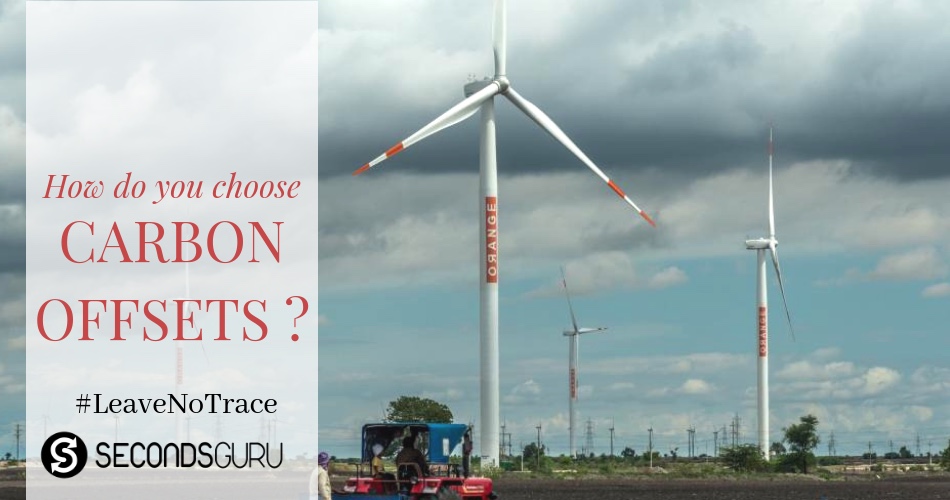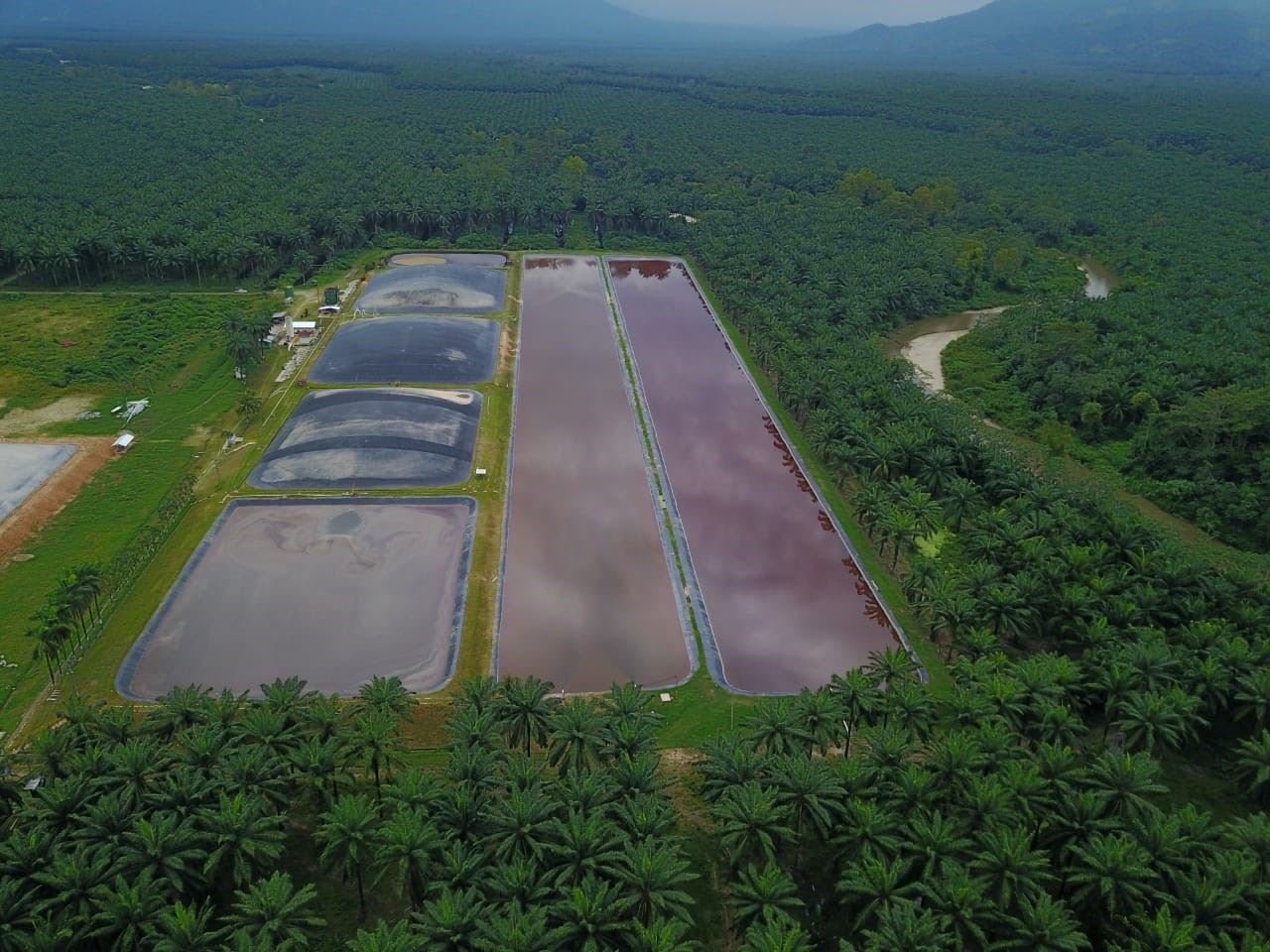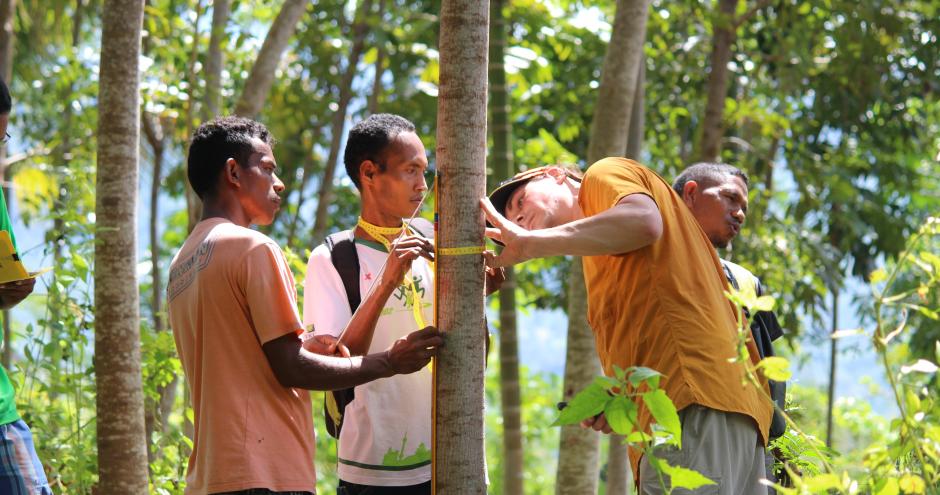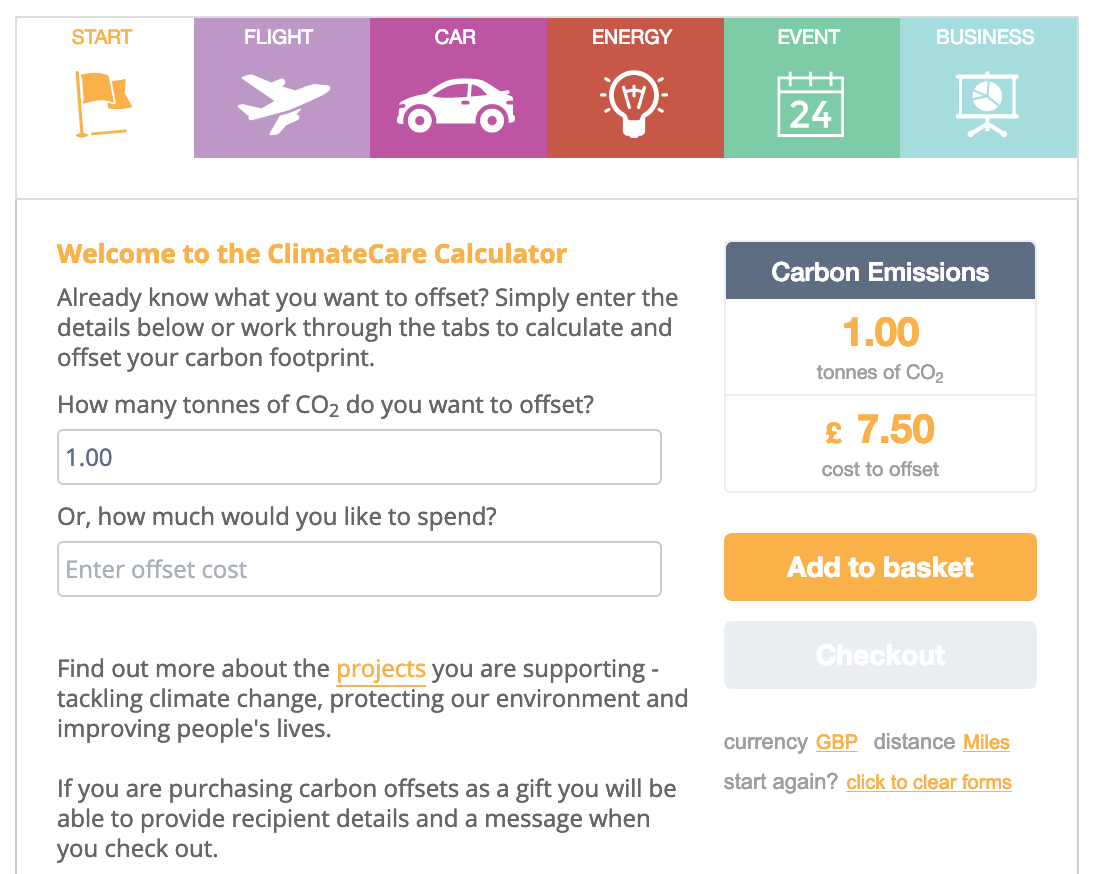Published 17 February 2019 ● Last Updated on 29 July 2020
“What difference does my teeny tiny carbon footprint really make?”
At some point of time, this question may have been a whisper in your ear or a small thought bubble in your head… My friend, the world’s population is currently 7.7 billion people and is growing every minute! So, if each one had that question, I think that ‘teeny tiny carbon footprint’ would be substantially large to have an impact on Mother Earth.
Singapore alone added about 52 million tonnes of carbon dioxide equivalent in the atmosphere in 2017! (And that’s just 1-thousandth of global greenhouse gases emissions.)
Wondering what’s your share of carbon footprint in all this?
In our previous article, we shared with you details on how you can calculate your own carbon footprint, and why you should invest in carbon offsets to minimise your impact. After all, despite your best efforts and all those lifestyle changes, you will still have a carbon footprint that you cannot avoid. This is where carbon offsets come in – these are investments in projects and companies that are engaged in restricting greenhouse gas emissions.
But before you run to Google to find a carbon offset project and buy your guilt away… wait! The principle of buyer beware applies to these projects, just as it applies to all things that sell online. We’ve put together a sort of guide that anticipates your questions – and better yet, helps you choose the right company or project.

What sort of projects can I invest in?
All emission reduction projects aim reduce the amount of greenhouse gases in the atmosphere. But how they seek to achieve it can differ widely.
Projects such as reforestation and forest maintenance aim to capture or store the greenhouse gases, hence preventing their release in the atmosphere. Others such as methane gas captures from agri-waste work to destroying or capturing a greenhouse gas that would otherwise be emitted into the atmosphere. And finally, there are the renewable energy projects – such as solar and wind power farms – which are also eligible as carbon offset projects because they replace the need for polluting fossil fuel plants to fill energy needs.
So if you go searching, be prepared to find a wide range of carbon offset projects. Broadly, this is what you can expect to see (classification by CORE – Carbon Offset Research and Education):
- Renewable Energy (Solar, Wind, Hydro and Biomass Power)
- Energy Efficiency (Energy Efficient light bulbs or cooking stoves)
- Industrial Gases (reduction/capture/destruction of GHG released in the industrial process)
- Methane Capture (Capture of Methane gas and burn it as fuel)
- Bio sequestration – Forests and Agriculture (Forest Regeneration, Avoiding Deforestation, Tree Planting)
- Carbon Capture and Storage (Capturing carbon released and storing it in a way so that it doesn’t affect the atmosphere)
It is appealing to make a decision on the basis of personal biases you have towards a certain type of project. Seems perfect to go finance tree planting every time you take a long flight, right? Unfortunately, there is many a slip between your carbon offset purchase and a real reduction in carbon emissions. Which is why you need to go beyond the headline photos and description of any carbon offset project.
How do I know that the project is legit?
Before you take the plunge, it is important that you verify the project you are investing in. There isn’t any ‘tried and tested’ checklist but there are some basic guidelines that one can follow to ensure that you are actually offsetting you carbon emission and not investing in a scam!
The following example is an adaptation from the National Resources Defense Council article that lists out things one should take into consideration when choosing an offset company or project.
Example – You are investing in an offset project that will use your money to provide energy efficient cooking stoves to people in remote areas in a developing nation.
- REAL: It is important to do a bit of research online and offline (if possible) to find out if the project actually exists on ground.
- VERIFIED: A third party must verify the existence of such a project – it could be the government, a NGO in the region or even the certification companies.
- ENFORCEABLE: There must be some authority that will penalise the offset company if the stoves are not being distributed.
- PERMANENT: The cooking stoves are actually being used by the locals over a long period of time. If they stop using it are a few months, then the project has no value.
- ADDITIONAL: If the locals have already been provided with cooking stoves by the government, and the offset company is doing an add on programme in the area. – it will in no way affect the amount of carbon in the atmosphere.
- LEAKAGE: The offset company is providing efficient cooking stoves in one place, whereas the neighbouring village is using the old stoves that are being discarded.
Isn’t there a dependable certification out there?
Certifications and Standards are the 3rd parties that verify the authenticity of an offset project as well as ensure that it follows some guidelines to be counted as a project that is making a difference and not some sham. While there are many of these, a few to definitely keep an eye out for are –
Clean Development Mechanism This standard measures the green house gas emissions reduced by projects in terms of Certified Emission Reductions (CERs). CERs are verified by the United Nations and adhere to the guidelines laid out in the Kyoto Protocol.
Gold Standards Developed under the leadership of WWF, this is one of the leading standards in the voluntary offset market. They ensure that projects are real and provide not only environmental benefits but also social and economical benefits to the community that they are developed in.
Verified Carbon Standards This standard focuses solely on the green house gas emission reductions by a project; it does not need it to have any additional environmental or social benefit.
If you are interested to know more are standards, you can take a look at this detailed report by WWF or this quick summary by Carbon Footprint.
Where should I start searching for a reliable carbon offset project?
While there are numerous companies and projects to choose from worldwide, we’ve picked what we felt would be ‘safe investments’ – your money is actually being used to make a difference! Feel free to go ahead and explore these options further, and buy your offsets when you are convinced.
-
The United Nations Carbon Offset Platform

The Climate Neutral Now initiative by the UN aims to encourage all to take positive climate action so as to limit the global temperature rise to less than 2 degrees Celsius, which is also the central goal of the Paris Agreement. It offers a simple 3 – step method of measuring emissions, making the necessary changes to reduce and finally, compensate by using UN Certified Emissions Reductions (CERs)*.
*Simply put, CERs are a type of emission unit (measured in tonnes of CO2 equivalent) that are used to measure green house gas emissions reduced by Clean Development Mechanism Projects (CDM). They adhere to the guidelines laid out in the Kyoto Protocol. These CER’s can be bought as offsets by individuals or organisations by investing in UNFCCC certified projects.
The reasons why we recommend The United Nations Carbon Offset Platform for you to choose your offset projects from are;
- It allows you to choose projects based on the type, continent or country it is in, the co-benefits of the project or it’s vintage.
- The offsets are very reasonable priced starting at as low as US$0.50.
- The individual project page has all details prevalent to it, including showing the top contributions as per country for the specific project.
- It has links to the CDM – UNFCCC page where you can check the project’s current status as well as links to the developer’s site too.
- There are pictures of each project available (which means they exist in reality!)
If you’d like to go ahead and explore the various projects available, click here or visit the main site for more information.
-
The Gold Standard
The Gold Standard is considered to be one of the most meticulous certifications for carbon offset projects globally. It was started in 2003 by WWF and other international NGOs to ensure that carbon offset projects also helped in sustainable development. Recently, in 2017, the Gold Standard for Global Goals was launched as “a next generation standard to quantify, certify and maximise impact toward climate security and sustainable development”.
Currently, the Gold Standard has more than 80 NGO supporters and over 1400 certified projects in more than 880 countries worldwide.

Some of the reasons why we recommend the Gold Standard Platform to choose you offset projects from are –
- There is a variety of projects to choose from in various countries. You can also choose a specific offset company to invest in.
- Additionally, you can choose the Sustainable Developmental Goals that you would like your project to also have an impact on.
- When you choose a project from the Gold Standards website, the chances are that the project has already gone through the rigorous certification process and actually has the certificate.
- Each project has a direct contact person whom one can get in touch with for further details
- Location of each project is shown on Google map (In case you happen to be in the area, you can just drop by!)
- If you would like to start a whole new project to offset, the steps that need to be followed to develop a project and get it certified are available on the website.
If this interests you, you can visit their homepage here and view their projects here.
-
Climate Care
UK based offset company Climate Care has been working in this area since 1997. Acquired by J P Morgan in 2008, they offer their services in the both public and private sectors; to corporate as well as individuals.
Through our online research, we felt that this company was safe to invest in because –
- It has set goals it aims to achieve and the Climate+Care projects aims to benefit the people, the environment as well as their partners.
- It has a number of certifications as well as has won many awards for the work it does.
- It invests in a portfolio of projects.
- The official website gives you ideas to reduce your carbon footprint – directly telling you that it is better to reduce first and then offset!

Go ahead and check out their carbon footprint calculator to figure how much you need to offset. Though as an individual you cannot choose a particular project to invest in, you can purchase (or gift!) offsets by investing in the fund.
The Last Word…
We are well aware of the fact that many of our daily activities add to greenhouse gas emissions and if we, each and every individual, don’t consciously decide to live a sustainable lifestyle, the effect of our actions on our planet will be devastating! It is vital that we become conscious of our actions and make the change for our brighter future.
We’ve said it before and we’ll say it again, our first and foremost aim should be to REDUCE our carbon footprints. One may read or hear a lot about how carbon offsets are not ‘as good as they seem’; for those who still choose to go ahead and invest – you are at least doing something to help heal Mother Earth!
To conclude, the words of writer Alva Lim (and here is the article) seem apt, “one small footprint for man, and one giant sustainable leap for mankind”
Related articles
Should you buy carbon offsets? | The solution when your best efforts aren’t good enough!



0 Comments